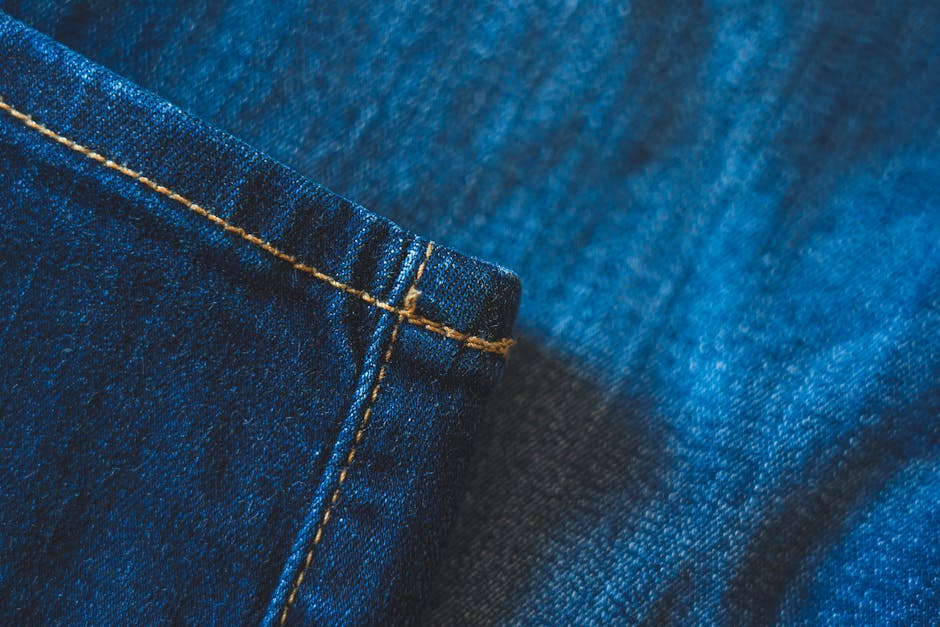Welcome to a world where fashion meets sustainability, and durability intertwines with style. In this era of conscious consumerism, the quest for long-lasting fabrics that not only stand the test of time but also leave a positive impact on the planet has never been more crucial. From the resilient fibers of linen and hemp to the timeless elegance of wool and the eco-friendly allure of sustainable cotton, the choices we make in our wardrobes can shape a more sustainable future. Join us on a journey through the textures and tales of these fabrics as we explore the benefits of choosing durability, eco-friendliness, and longevity in our fashion choices.

The Benefits of Linen Fabric
Linen fabric is renowned for its durability and breathability, making it a popular choice for various clothing items and home textiles. The natural fibers of linen are exceptionally strong, which results in a long-lasting and sturdy fabric that can withstand frequent use and washing. Additionally, linen has moisture-wicking properties, allowing it to quickly absorb and release moisture, keeping the wearer cool and comfortable in warm weather.
Moreover, linen is a sustainable and eco-friendly fabric, as it is made from the flax plant, which requires minimal water and pesticides to grow. This makes linen a great choice for environmentally conscious consumers looking to reduce their carbon footprint. Its versatility extends beyond clothing, as linen is also commonly used for bedding, table linens, and upholstery due to its timeless aesthetic and practical benefits.
Exploring the Durability of Hemp
Hemp fabric is gaining popularity for its exceptional durability and sustainability in the textile industry. Known for being one of the strongest natural fibers, hemp is highly resistant to wear and tear, making it ideal for long-lasting clothing and accessories. The robust nature of hemp fabric allows it to maintain its quality even after multiple washes, ensuring that the garments retain their shape and color for an extended period.
In addition to its durability, hemp is a sustainable choice as it requires minimal water and pesticides to grow, making it an eco-friendly alternative to conventional fabrics. The cultivation of hemp also enriches the soil and reduces carbon dioxide levels in the atmosphere, further contributing to its environmental benefits. With its durability and eco-conscious properties, hemp fabric is a versatile and reliable option for conscious consumers looking for both quality and sustainability in their wardrobe choices.
Wool: A Timeless and Resilient Fabric
Wool has been a staple fabric for centuries, known for its timeless appeal and remarkable resilience. This natural fiber is celebrated for its durability and ability to retain its shape, making it a popular choice for high-quality garments and home textiles. The unique structure of wool fibers allows them to stretch and bounce back to their original form, ensuring that wool products maintain their integrity even after frequent wear.
Beyond its durability, wool offers exceptional insulation properties, keeping the wearer warm in cold weather and cool in warmer temperatures. This versatility makes wool a versatile fabric suitable for a wide range of climates and seasons. Additionally, wool is naturally moisture-wicking and odor-resistant, adding to its practicality and comfort. With its timeless charm and inherent strength, wool remains a favorite among fashion enthusiasts and eco-conscious consumers seeking long-lasting and sustainable clothing options.
Sustainable Cotton: Eco-Friendly and Long-Lasting
Sustainable cotton is revolutionizing the fashion industry with its eco-friendly and long-lasting qualities. Unlike conventional cotton, sustainable cotton is grown using organic and eco-conscious practices that minimize the use of harmful chemicals and promote soil health. By choosing sustainable cotton, consumers support a more environmentally friendly production process that benefits both the planet and the communities involved in cotton farming.
Moreover, sustainable cotton is known for its durability and longevity, making it a wise investment for conscious consumers looking for quality and sustainability in their clothing choices. The strong fibers of sustainable cotton result in garments that are resistant to wear and tear, ensuring that they can withstand the test of time and remain in good condition even after repeated wear and wash cycles. With its eco-friendly production methods and long-lasting properties, sustainable cotton is a versatile and ethical choice for those seeking to make a positive impact through their fashion purchases.
As we conclude our exploration of durable and sustainable fabrics, may this journey inspire you to make conscious choices that not only enhance your wardrobe but also contribute to a more sustainable future. By opting for fabrics like linen, hemp, wool, bamboo, and sustainable cotton, you are not just investing in quality and longevity but also supporting ethical and eco-friendly practices in the fashion industry. Let your clothing tell a story of resilience, elegance, and environmental stewardship. Together, we can weave a tapestry of sustainability, one fabric choice at a time. Embrace the power of durable textiles and make a lasting impact, both in your style and on the planet.










Leave a Reply